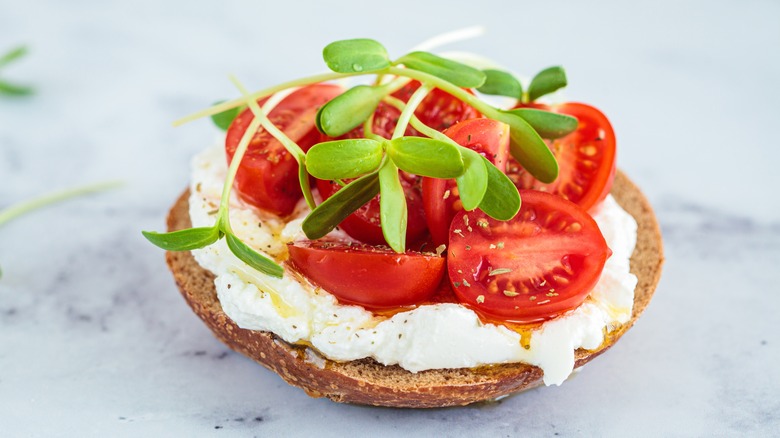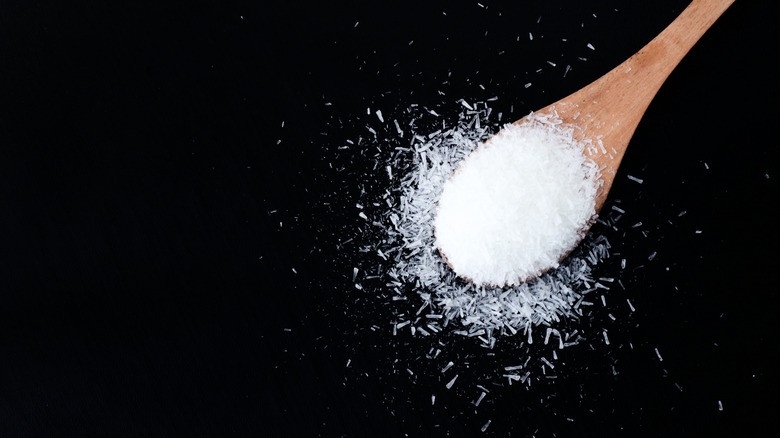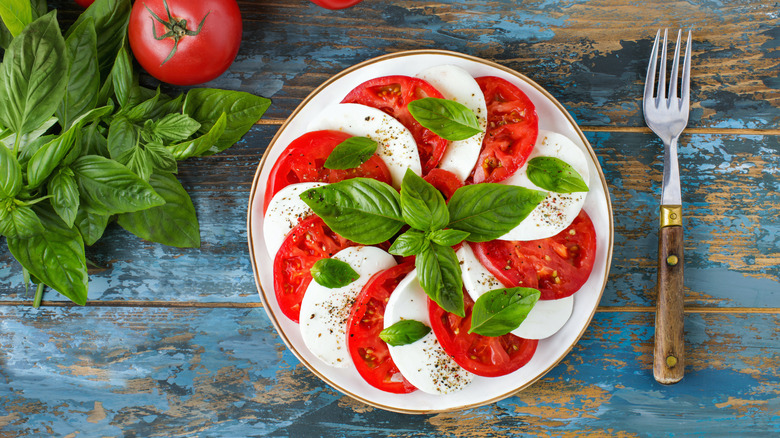Give Your Tomato Toast A Savory Boost With A Sprinkle Of MSG
The first time I bought a bag of MSG, I felt like I was buying some kind of illicit substance. I felt a rush as I took the bag of flakey white crystals to the cashier. Once home, I paused before taking a taste. Sure, I knew full well that the ingredient was harmless, but decades of anti-MSG prejudice had taken their toll. MSG is widely used in Asian kitchens. In the West, it's still demonized thanks to 1960s-era reports that it was toxic. However, the FDA states that studies have consistently failed to show serious health effects. Some reports claim it can produce mild symptoms, but there's a catch: symptoms occurred after people with MSG sensitivity consumed 3 grams straight, without food. That's six times the normal serving. Unless you're eating MSG by the spoonful, you're in the clear.
That's not something you'd want anyway: as I found from my initial sample, it doesn't taste great on its own. But added to savory foods, it makes flavors come alive. Now, I use MSG regularly. Want to try? Start out with one of my favorites: sprinkled over tomato toast. It's an elegant summer lunch, and the dish's simplicity lets flavors shine through.
All you need is MSG, a slice of bread (I recommend Italian), and a thinly sliced tomato. Add basil, avocado, or mozzarella cheese, and you have a classic combo. If you're new to MSG, it's a great way to highlight the power of the seasoning.
Why MSG and tomatoes work
To see why MSG works so well with tomatoes, it helps to understand what it is. MSG, or monosodium glutamate, occurs naturally in many vegetables — and even in our own bodies. It was first identified in the early 20th century by Japanese chemistry professor Kikunae Ikeda, who extracted glutamic acid from kelp. MSG is essentially pure umami: monosodium glutamate is responsible for what we perceive as savory, umami flavors.
In the natural world, MSG gives mushrooms, tomatoes, and nuts their signature taste. The more MSG, the more intense the flavor. That means a sprinkle of MSG can help keep that summertime zest of a fresh, juicy tomato alive even as tomato season ends and we fade into fall. But it's not just a way to perk up lackluster grocery store fare: use it to take homegrown heirlooms to a whole other level. It might feel like some tomato-related witchcraft, but it's just science.
Ways to serve tomatoes with MSG
For a simple tomato toast, I lightly toasted a slice of Italian bread with garlic butter in my cast iron skillet. Then, I topped the bread with slices of homegrown tomato. I gave the tomatoes a few shakes of MSG and added a sprinkling of freshly crushed black pepper from my pepper grinder. I finished it off with a few sprigs of basil, and lunch was complete. It was delicious. If I'd had mozzarella on hand, I would've used it — but the simple sandwich worked even without it. While the tomatoes were flavorful to begin with, the MSG gave them added depth and intensity. Just don't overdo it. You want just enough MSG to bring out the flavor.
Of course, tomato toast isn't the only way to eat fresh tomatoes. A dish of nothing but seasoned tomatoes is a remarkably chic dinner party side (simple ways to eat whole veggies are having a moment). But if a plate full of raw tomatoes is too much, there are plenty of other ways to pair the two ingredients.
A Caprese salad — or any salad — sprinkled with MSG lets the tomatoes shine. And, if raw tomatoes aren't your thing, you can always add MSG to roasted tomatoes, red sauces, or tomato soups. Once you're familiar with the ingredient, you'll be adding MSG to scrambled eggs, stir-fries, stews, and even cocktails.


